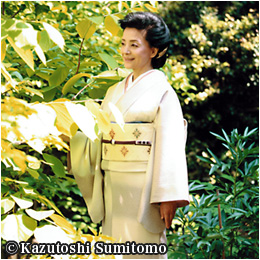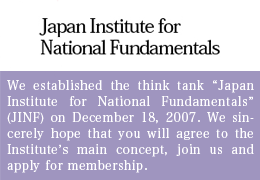ANTI-JAPANESE REMARKS REFLECT AMERICAN PREFERENCE FOR A WEAK JAPAN
In 1853 Commodore Matthew Perry and his four “black ships” used gun boat diplomacy to force Japan to open the country. For nearly a half century after that, the US and Japan managed to maintain basically friendly relations, avoiding open hostility and steadily promoting bilateral trade. Then in 1905, when Japan defeated Russia in the Russo-Japanese War, President Theodore Roosevelt, apparently delighted with the Japanese victory, actively backed peace negotiations between the two countries, winning the Nobel Prize for his efforts.
While this is how things appeared on the surface, in point of fact the US simultaneously began to have a growing wariness about Japan’s intentions in the region. Positioning Japan as a hypothetical enemy, the US Naval Institute in 1906 drew up a contingency plan called “War Plan Orange” on the assumption that the US and Japan were destined to someday clash over control of the Pacific.
Over the years this plan was studied and improved and brought to perfection to such a thorough extent as to be incorporated into the DNA of almost every American naval officer. That this plan was completed 35 years before Japan actually waged war against the US makes one keenly aware of the thoroughness of the military planning of the US.
Spurred by growing suspicions and wariness in the US about a rising Japan, Edward Miller maintains in War Plan Orange—The US Strategy to Defeat Japan, 1897-1945 (Naval Institute Press; 1991) that the origins of this willingness to so quickly designate Japan as a potential enemy can be found in the fervent racism prevalent on the West Coast in the early 1900s.
Japanese workers who migrated to California between 1891 and 1906, numbering several thousands, were subject to harsh discrimination by the state’s white community. Newspapers were responsible for inflaming the racism of the time, with the New York Times playing a leading role.
For instance, the daily’s December 16, 1906 issue carried an article with the following remarks:
–“He (the Japanese) was a demure little brown man…We were the dominant Caucasian race, he was of the inferior Asiatic race—a race from which came our servants.”
–“As between the Japanese and the Chinese, the sentiment strongly sets toward the latter. They always remain distinctively Chinese in their dress and in their traditions generally…It is not so with the Japanese.”
–“With the close of the Russo-Japanese War, gone is the old deference on the Japanese…He will not take his place with the Chinese—in his superb egotism nothing short of social equality will satisfy his ambition.”
–“The Asiatic race must remain an inferior race, and if the situation is distasteful to him, he must remain in his own country.”
Groundless Charges
As public opinion was whipped up by reports reflecting this racial prejudice, the situation in California grew seriously strained, prompting the Naval Institute to work out War Plan Orange—this according to records of the institute itself.
While I have no intention of singling out the reporting of the New York Times as the cause of the eventual outbreak of war between the US and Japan, I do suspect that the daily’s reporting must have contributed to the deterioration of the bilateral relationship. And now today, more than a century later, the same newspaper is hurling equally absurd accusations at Japan.
On December 2, the daily bashed Japan once again, running an article by its Tokyo bureau chief, Martin Fackler, entitled: “Rewriting the War, Japanese Right Attacks a Newspaper.” Asserting that current criticism of the Asahi Shimbun over its past erroneous reporting of the “comfort women” issue is driven by Japanese right wingers and ultranationalists, Fackler depicts a former Asahi reporter, Takashi Uemura, as a victim in the ongoing controversy. Writes Fackler sympathetically: “Takashi Uemura was 33 when he wrote the article that would make his career…now 56 and retired from journalism, (he is) a target of Japan’s political right.”
Fackler further alleges: “(Prime Minister Shinzo) Abe and his political allies have also seized on the Asahi’s woes as a long-awaited chance to go after bigger game: the now internationally accepted view that the Japanese military coerced tens of thousands of Korean and other foreign women into sexual slavery during the war.”
Just two days later, on December 4, the New York Times upgraded its attack on the criticism of the Asahi to an editorial entitled: “Whitewashing History in Japan,” asserting: “Right-wing political forces in Japan, encouraged by the government of Prime Minister Shinzo Abe, are waging a campaign of intimidation to deny the disgraceful chapter in World War II…”
What the daily pointedly fails to mention is that the story Uemura wrote about Ms. Kim Hak-sun, a former “comfort woman,” had been invented. Ms. Kim in fact had earlier admitted to having been sold to a Korean house of prostitution by her own father when young. In his article, not only does Fackler fail to mention this critical fact, but buries deep in his piece an admission that, “There is little evidence that the Japanese military abducted or was directly involved in entrapping women in Korea…” And yet earlier in this same article he boldly maintains that the “Japanese military coerced tens of thousands of Korean and other foreign women into sexual slavery…” This type of sloppy reporting and biased view of Japan on the part of the New York Times has not been limited just to its accounts of the “comfort women,” as is evidenced by an article on the Showa Emperor by American historian Herbert Bix, published last September 29, entitled “Hirohito: String Puller, Not Puppet.”
Bix’s accusations directed at Emperor Hirohito, Japan as a nation, and the Abe administration seriously lack intellectual fairness—to such an extent that one wonders what it is that is driving this historian to be so appallingly biased. Bix asserts that Emperor Hirohito “represented an ideology and an institution—a system constructed to allow the emperor to interject his will into the decision-making process…” He then brings forth a blatantly unsubstantiated claim: “Even after the war, when a new, American-modeled constitution deprived him of sovereignty, he continued to meddle in politics.”
Presenting no reasonable grounds whatsoever, Bix also writes that “Hirohito was a timid opportunist, eager above all to preserve the monarchy he had been brought up to defend.” He utterly fails to note how committed the Showa Emperor was to honoring the new constitution as a constitutional monarch, and how sincere he was in his efforts to refrain from interfering with politics. Obviously, Bix does not feel any shame at having written such a slanderous commentary unfit for his title as a scholar of Japanese history. It is also obvious that the New York Times on its part, too, does not feel any shame at having run such an article.
Anti-Japan and Pro-China Posture in the US: Two Side of the Same Coin
Why does the New York Times so tirelessly repeat such malicious commentaries and reports about Japan? History says a great deal about the daily’s Japan-bashing as a reflection of a deep-lying disdain of Japan that has long been a part of America’s view of this country.
As mentioned earlier, Japan’s surprising triumph over Russia in 1905, coupled with an increasing number of Japanese immigrants, brought about a growing suspicion and wariness of Japan among Americans, and this in turn was a significant factor behind the creation of War Plan Orange. American wariness about Japan later led to the abrogation of the Anglo-Japanese Alliance at the Washington Naval Conference in 1922, constituting the driving force behind Japan’s isolation from the international community.
I of course do not hold only the US accountable for the deterioration of our bilateral relationship. I believe the 21 demands Japan made on China in 1915, among other factors, caused American suspicions of Japan to deepen, significantly contributing to the heightening of anti-Japanese and pro-Chinese sentiments which had always existed in the US.
Even so, the general mood in the US towards Japan was unduly severe, prompting internationally renowned strategist George Kennan to observe about this period: “…the bulk of our diplomatic activity was activity designed to deflect other powers, notably the Japanese, from the pursuit of specific courses of action we did not like.” (American Diplomacy 1900-1950, the University of Chicago Press, 1951).
And how did the US deal with Japan after its defeat in the Greater East Asian War? As is clearly demonstrated by the post-war constitution, the US sought to thoroughly change Japan under a philosophy which pledged to never allow Japan to be independent and strong again. Throughout the post-war period, the US has continued to try to keep Japan in check. American criticism of visits to Yasukuni, the Showa Emperor, a proposed revision of the constitution currently being pursued by the Abe administration, and Japan’s handling of the “comfort women” issue—these attacks all have the same roots.
The thinking of the Americans who wrote the existing “peace” constitution as a mechanism for keeping Japan forever spiritless and fragile is widespread even in this day and age in the political and economic circles, the press, and the business community of America. America’s severe posture towards Japan and its seemingly overly pro-Chinese stance are the two sides of the same coin. Given this reality, it is critical that Japan work out its own prudent strategy to ensure its survival in this complex world.
(Translated from “Renaissance Japan” column #635 in the December 18, 2014 issue of The Weekly Shincho)








